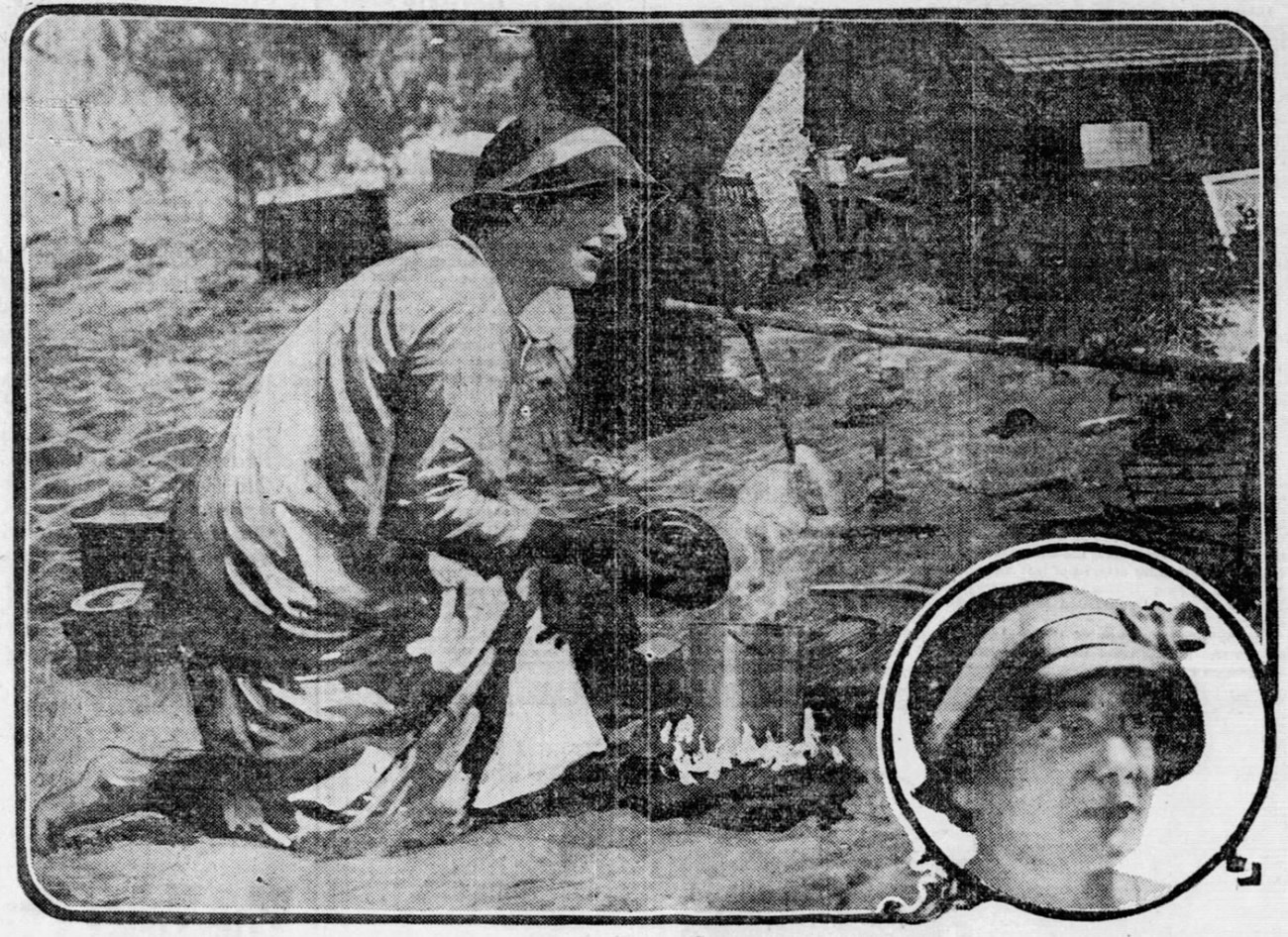Last updated: November 1, 2024
Article
An Early Account of Diana of the Dunes

Chicago Tribune; July 24, 1916.
Alice Mabel Gray
Alice Mabel Gray left Chicago on October 31, 1915. Displeased with city life, she sought simiplicity and solitutde by taking the train to Indiana Dunes. The next summer, a reporter named Honor Fanning found Alice at her shack. The following is her article that was replicated for dozens of newspapers across the country:
Nymph of the Sand Dunes
By Honor Fanning
Here on the shore of Lake Michigan, in the foothills of high sand dunes, in a wilderness of pine trees and a jungle of marshes, miles beyond echo of human voice, I found “Diana of the Dunes,” Alice Gray, University of Chicago graduate, who, since last October, has spoken less than a dozen times to human creatures.
Diana of mythology was known to the Romans as the chaste goddess—Diana the huntress. She hated men and went into the wilderness to live in virgin purity.
This “Diana” in the flesh I found hedged from the world by two miles of almost impenetrable sand drifts and boggy marshes. And it was through these drifts and marshes that I traveled—the first woman to penetrate the sanctuary of this modern-world Diana, who has just been discovered by fishermen in solitude as deep as the solitude of Alexander Selkirk on his desert isle.
It was dawn when I came upon her retreat in the dunes. The hut was empty, but a bed of green boughs, and two sinister revolvers on the foot of the bed was assurance I had found the hermit’s hiding place. When a strong, lithe, clear-eyed smiling young woman, bare legged as a nymph, hair cut boy fashion, face sunkissed to a deep brown, sprang through the pine scrubs I knew I had found “Diana.”
A single garment was her only attire. She brushed through the pines, surprise and terror flashing in her eyes.
“Who are you, please?” she demanded. “I must not see strangers. I had hoped nobody would find me here.”
It took some time to assure her of my good intentions, and of the public interest in her strange adventure.
“I am sorry they call me a ‘hermit’ and the ‘mystery woman,’” she said. “We are all mysteries to somebody or other. I must remain a mystery to the public for a time. I came here to the wilderness to seek—well, to seek myself. I was working in Chicago, making little in the way of money, doing little of importance to the world, it seemed. I had measured myself with the world—the results were not encouraging. I came here to measure myself with nature. I found a cave here in the hills, spread my blanket, slept under the stars, and communed with myself. I BEGAN TO LIVE. I have had ten glorious months. I have no worries about work, about the daily grind of living and doing. I AM FREE.”
And so the modern-world “Diana” philosophized about life, but her philosophy only draws the veil of mystery more closely about her. These facts, however, she admits.
Her name is Alice Gray. She graduated from University of Chicago in 1903; held a secretaryship in a large publishing house and it was predicted she would follow a literary career. One day weariness of the world overtook her. A red Mexican blanket that adorned her cottage den, a few clothes and her pay envelope with “just a few dollars in it” were tossed into a grip. She had heard of the Sahara-like sand dunes that drift along the lake shore. To the dunes she came. There was no human habitation in sight. Only the birds gave her welcome. In a dugout she spread her blanket.
“The dugout was too cold,” she says, “and I found this hut. Everything I have here, this chair, this cap I wear, these tins, are driftwood, drifted in from the lake—I, too, am driftwood. I got sail’s cloth from a fisherman and made this thing I wear. I got rid of everything that looked like the city. The fishermen who live up the beach sometime bring some extra food from town, and I buy it from them. Farmer boys sell me eggs. I HAVE REDUCED THE COST OF LIVING TO ALMOST NOTHING—10 CENTS A DAY AT MOST.
“Some day I suppose I’ll want to go back. But the city can never give me what the wilderness has given me—peace of mind, and the strength of mind to live alone.”
Source: The Fort Wayne News And Sentinel; August 1, 1916; Page 11; "'Diana of the Dunes,' Fled from World of Men, Discloses Mystery of Weird Life to Woman Writer"
